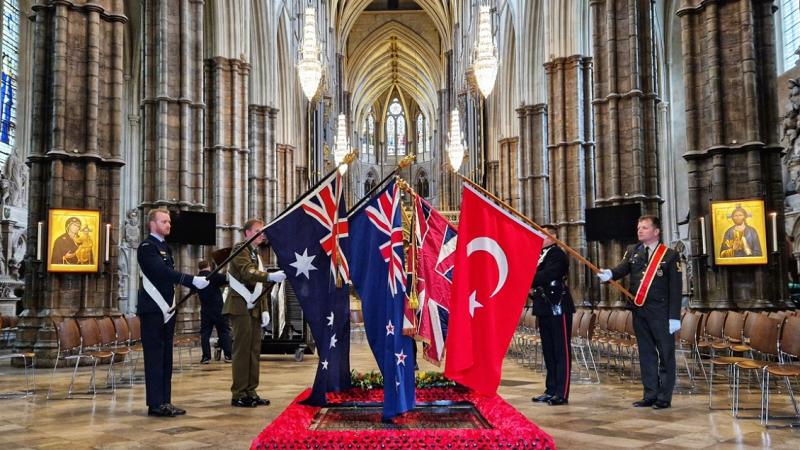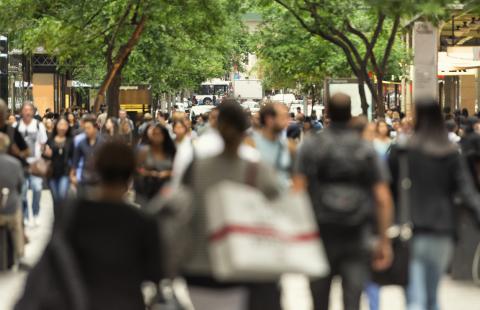Informal settlement can be broadly defined as the incremental, unauthorised and self-organised production of affordable housing and urban infrastructure.
While often misunderstood as a euphemism for ‘slum’, informal settlement is best understood as a mode of city production – a form of architecture, urban design and planning. It may appear unplanned but there are rules – a kind of spatial logic that shapes urban development across cities of the Global South.
Most affordable housing and neighbourhood infrastructure in these cities is produced by informal settlement. According to UN figures, between 1990-2015 urban populations of developing cities doubled from 1.5 to three billion, and the overwhelming majority live in informally produced neighbourhoods.
In population terms, informal settlement is the most pervasive mode of new urbanisation and affordable housing on the planet, housing up to two billion people.
Our team at the Informal Urbanism Research Hub (InfUr-) at the Melbourne School of Design have been studying the rules and logic of informal settlements by mapping and analysing the evolution of urban form in 51 contemporary settlements across the planet – including Talaba, Baseco and San Roque in Manila, Tongui and Villa 31 in Buenos Aires, and Old Fadama and Panbros in Accra.
From this, we produced the Atlas of Informal Settlement (London: Bloomsbury), the first book of its kind and a fundamental change in thinking for urban studies and built environment professionals.
Through the process of developing this atlas, we have learnt much about the varied processes and contexts that lead to informal settlement.
Informal settlement is not one thing
Informal settlement is not a singular process but differs with topography, climate, culture, materials, economics and politics. It occurs on many kinds of land, from public to private.
It may produce new land or bring inaccessible land into productive use. In Karail (Dhaka) and Cité Lajoie (Haiti), rickshaws and trucks respectively are used to dump rubble as a prelude to new construction, shaping the street network as they go with lanes and streets perpendicular to the coast.
The book includes detailed morphogenic mapping of 51 settlements. Angelo is a settlement near Johannesburg, South Africa which was demolished and then resettled with a largely new street pattern. The Al Baragheil settlement in Cairo shows informal development spreading across agricultural fields of the Nile valley.
A multiplicity of agents can be involved in the production of informal settlements, including NGOs, pirate developers, land mafias and state agencies.
Informal settlement stems from rural-to-urban migration and refugee flows; from desires for better lives and livelihoods; and from social inequalities, deregulated economies, poor housing policies and forced evictions.
It is produced by the deregulated markets and inequalities of neoliberal capitalism, yet it is also a form of radical democracy that embodies the ‘right to the city’. The question is not which of these narratives we might choose, but how effectively we can engage with this paradox.
Informal settlement is not chaos
Informal settlement is shaped in accordance with the desires and designs of its residents. Its order is not random, chaotic or ‘organic’, but an order that emerges from a complex set of interactions between informal and formal modes of production.
The overwhelming majority of informal settlements are permanent. Even demolition – which displaces people and destroys livelihoods – often stimulates new informal re-settlement rather than more formal, planned settlements.
The Atlas aims to build a better understanding of how informal settlement practices may or may not produce ‘slums’, how ‘upgrading’ practices may be improved and how informal production may be anticipated and harnessed.
Which comes first – architecture or planning?
In a formal settlement, the street network is designed first, and the architecture follows within the framework set by the planning process. In an informal settlement, architecture often comes first, with the street network emerging from gaps between buildings.
This spatial logic of informal settlement is as old as urban history and precedes the emergence of the state. It embodies walkable street networks, intensive street life, mixed-use and mixed-density living – a logic that is at the heart of what makes all cities tick, and one that wealthy cities aspire to but often fail to implement.
A better understanding of informal settlement will lead to better design of formal settlements.
Settlement as a verb
A settlement is a place, but it is also an activity, and in The Atlas we explore the word ‘settlement’ as a verb – building, connecting, walking, designing, extending, demolishing, upgrading, plotting, planning, becoming.
We look for connections, flows, attractions, alliances, symbioses and synergies. We ask how settlement works and how it is changing – how settlement acts as both a process of becoming settled and as a space of possibilities.
Settlements are livelihoods
Every settlement is a bundle of assets. These include access to jobs, street vending and transport, plus home ownership and the de facto tenure that emerges over time. They also include the capacity to build incrementally as resources become available – like opening a shop and then extending upwards.
Informal settlement emerges where it needs to be to sustain livelihoods for the urban poor. It adapts to political, social and economic conditions, it re-encroaches after formalisation, demolition or natural disaster. Informal settlement is resilient urbanism.
Settlement shape and structure matter not because of what it looks like but because of how it works or fails to work in sustaining livelihoods. A better understanding enables more effective upgrading, the harnessing of productive capacities, and the anticipation of future settlement patterns.
We need to rethink informal settlement not as a chaotic, inefficient means of city building that inevitably leads to slums. The Atlas uses the lens of urban design analysis to understand the spatial logic of informal settlement.
This is a way to better understand social, economic and spatial inequalities, and is a basis for more effective engagement with them. We need to stop using ‘informal settlement’ as a euphemism for ‘slums’, and turn around the one-way thinking around demolition and replacement.
The challenge is to learn from informal settlements for a better understanding of both formal and informal practices and the interrelations between them.
The Atlas of Informal Settlement is available now, and an exhibition of work from the Atlas of Informal Settlement will be held in the Atrium of the Melbourne School of Design until 2 November.








